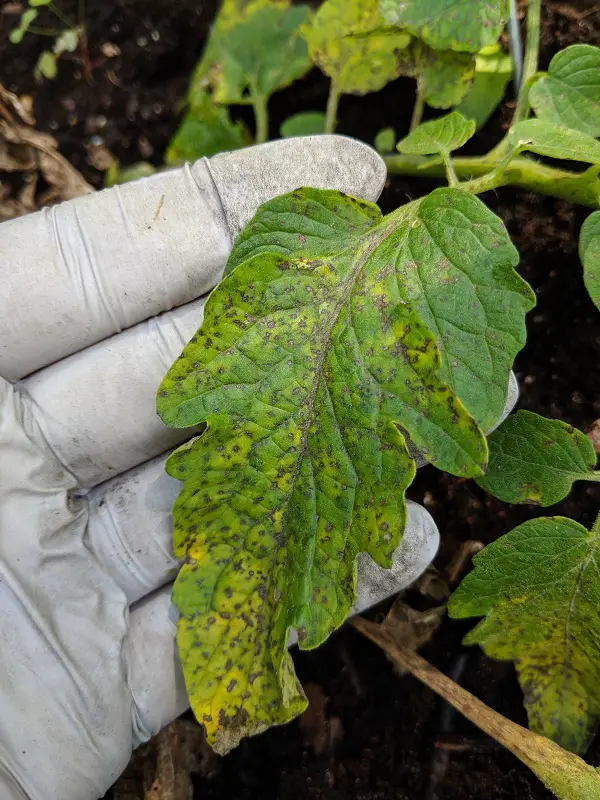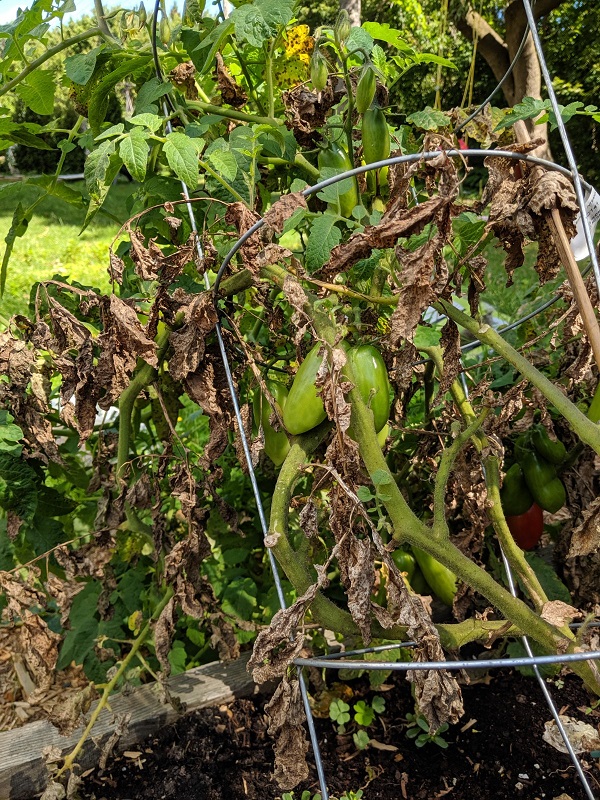If you’ve noticed some unusual spots on the lower leaves of your garden plants, such as tomatoes, you’re probably dealing with Septoria Leaf Spot! Read on to learn how to treat and control this common garden disease.

What is Septoria Leaf Spot
Septoria Leaf Spot is a fungal disease that mainly hits foliage. It is caused by Septoria lycopersici fungus that thrives in damp soil, debris and weeds around the plant. It can overwinter on the weeds waiting for ideal conditions to appear. When fungus’ most favorable conditions appear, and that means warm (60 to 80 F) and humid weather, the fungus easily spreads to the nearby plant by irrigation water, rain or wind. The disease usually appears during the spring and can reoccur throughout the summer.
Tomatoes are widely affected by this fungal disease, although it can affect eggplant, potatoes, or some ornamental shrubs and flowers such as hydrangeas or daisies. However, when we’re talking about Septoria Leaf Spot, we mainly think of tomatoes and the ways that we can protect the fruit.
Septoria Leaf Spot Symptoms
Septoria leaf spots first occur on the lower parts of the plant, as the fungus tends to spread from the ground. They appear on the underside of the older leaves. These spots are very distinctive – they are small (1/16 to 1/8 inches) and numerous with a greyish center and brownish edges.
As the fungus matures, these spots become larger and often there will be a brown patch surrounding the lesion. Sometimes these spots can merge together, but dark brown pimples seen through magnifying lens make the Septoria Leaf Spot distinguished from other leaf diseases. Eventually, the infected leaves will yellow and drop over time, leaving the plant unable to bear healthy fruit.
Although Septoria Leaf Spot appear mainly on lower leaves of the plant, it can also affect upper foliage or even the stem. It doesn’t affect tomato fruit, so if you find any damages on the fruit, it’s not Septoria-related.

Septoria Leaf Spot Treatment
Although Septoria leaf spot is rarely fatal and can be fixed, it’s important to react quickly. The disease spreads easily and can lead to plant weakness. Too many leaves impacted can reduce the plant’s ability to photosynthesize light, remaining the plant fruitless or sometimes causing the death.
Septoria Leaf treatment may include some of these options:
- Removing infected leaves – Remove any damaged fallen leaves as well and destroy the infected plant material. Be sure to wash your hands and tools to avoid spores spreading.
- Organic fungicide options -Fungicides containing either copper or potassium bicarbonate fungicide can help controlling disease and prevent further spreading. If you treat a disease on an edible plant, pay attention to the labeling on the container and follow the directions carefully.
- Chemical fungicides – If organic fungicides appear to be too weak, consider a chemical treatment. Some of the least harmful chemical fungicides are Draconil or Fugonil which contain chlorothalonil.
Septoria Leaf Spot Prevention
Consider these precaution options to avoid Septoria Leaf Spot disease:
- Never use infected soil or leaves to mulch or compost.
- Keep weeds in check, because spores hold onto many weed species.
- Don’t overwater your plants, and be sure to water only the soil and the base of the plant, not the leaves.
- Provide good air circulation to your plants. Don’t plant them too close to each other and trim the excess foliage to provide proper airflow.
- Mulch around the plants because a layer of mulch keeps the spores close to the ground preventing them to spread on the garden plant.
- Rotate crops. Since the Septoria spores can overwinter in the soil, crop rotation can reduce reinfection.